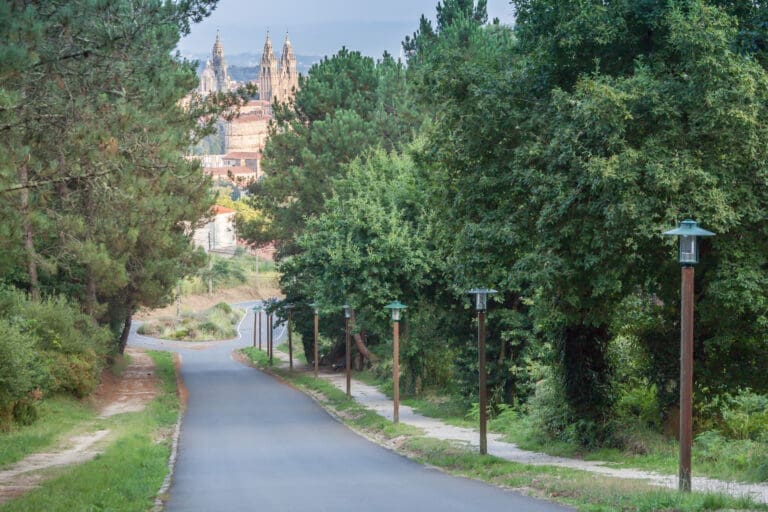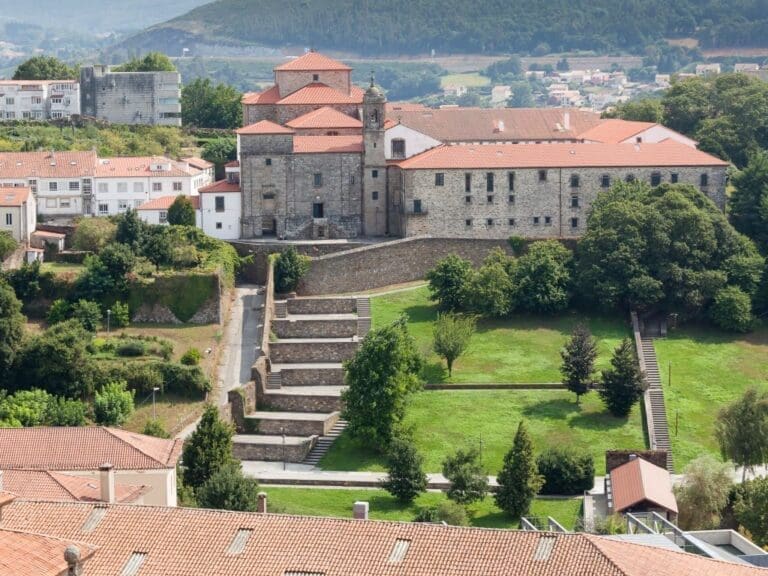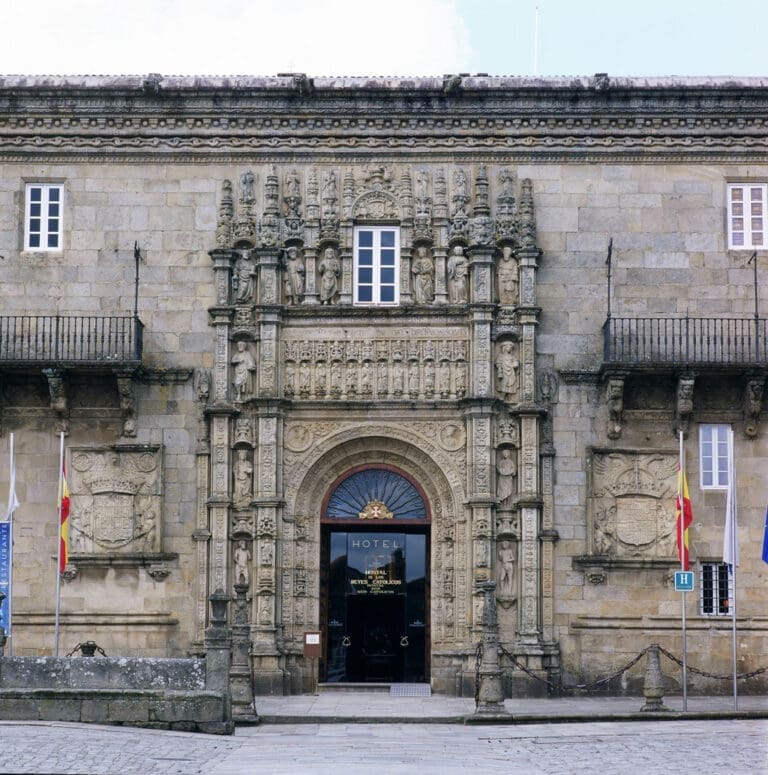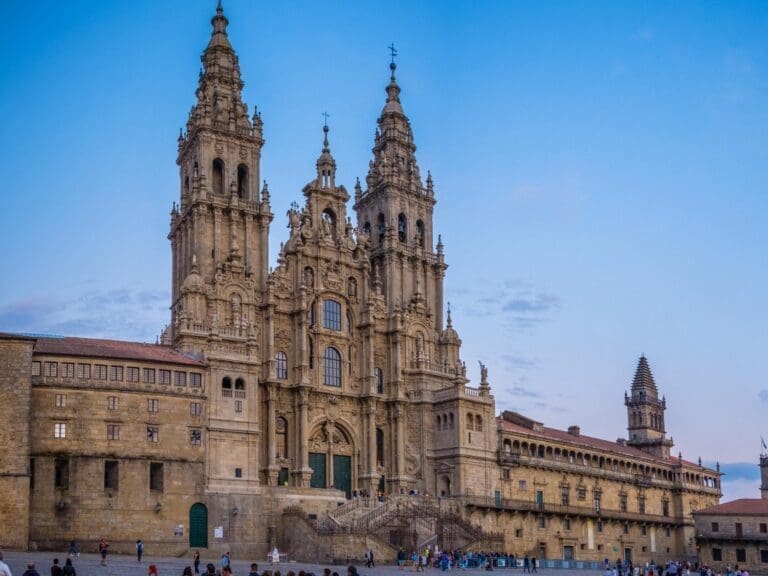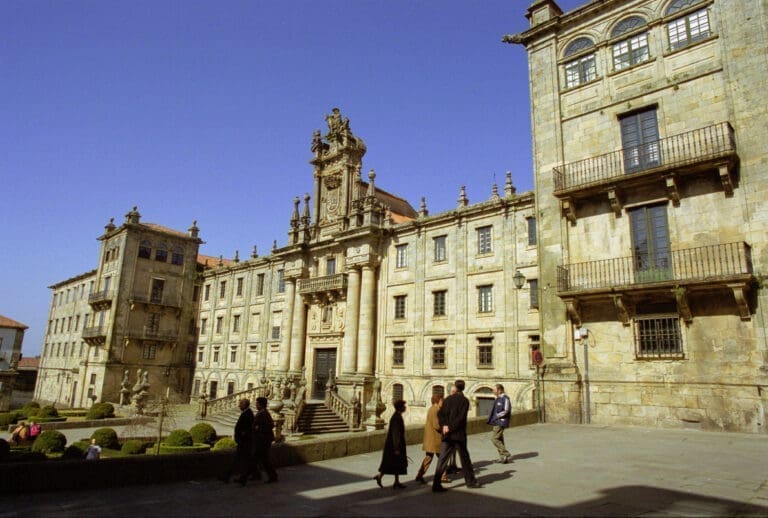The Cathedral of Santiago de Compostela is the most outstanding work of Romanesque art in Spain. It is also the final goal of all the Pilgrim’s Roads to Santiago, which for centuries have led Christian pilgrims to the tomb of an apostle. As if that were not enough, it was the inaugural stone for the construction of a monumental city, Santiago de Compostela, which was born in a sacred forest at the end of the world with the vocation of a Holy City and World Heritage Site.
Today, with a thousand years of existence lived to the rhythm of the extraordinary history of Compostela, the Cathedral is shown as a complex set of spaces capable of rewarding with its powerful spirituality the faith of the walkers and with its beauty to the visitors of the world.
The most remote antecedent of the Cathedral was a small Roman mausoleum of the first century in which the remains of the Apostle Santiago were buried after his decapitation in Palestine (year 44 A.D.) and after his transfer by sea to the coasts of the finis terrae. For centuries, the subway chamber and the surrounding necropolis were assiduously visited by a small local Christian community, of which little or nothing is known, but which must have been decimated around the 8th century.
In the year 813 (according to versions, 820 and up to 830) the miraculous discovery of the relics of the Apostle took place under the undergrowth of Mount Libredon. They were found by a hermit who saw celestial signs there. On the advice of the bishop of Iria Flavia, the Asturian king Alfonso II ordered the construction of a first chapel of stone and clay next to the ancient mausoleum. In 834, this temple received a royal preceptum that made it an episcopal see and gave it power over the surrounding territories. Around it, seeking its protection, the first settlers and monastic groups of Benedictines began to establish themselves in charge of the custody of the relics. These were the first steps of the future city of Santiago de Compostela.
The first church soon became too small to accommodate the faithful, so between 872 and 899 Alfonso III the Great had a larger church built. But this second church was destroyed by the attack of the Muslim leader Almanzor in 997. Bishop San Pedro de Mezonzo rebuilt it in 1003, in a pre-Romanesque style. This third temple was still standing when the boom in pilgrimages and the riches of Santiago, which was already one of the largest feudal estates in the Iberian Peninsula, made it possible to begin construction in 1075 of the Romanesque cathedral that remains today, the fourth sacred building over the ancient tomb.
The Romanesque Cathedral
The Leonese king Alfonso VI and especially the first archbishop of the city, Diego Gelmirez, promoted the Cathedral, urban life and pilgrimages in such a way that the 12th century can be considered the most splendid in the history of Santiago de Compostela. This time they did not settle for a sanctuary to house the relics, but designed a large pilgrimage cathedral in the style of the Camino de Santiago. The best Romanesque builders would parade through it until Master Mateo, author of the last sections of the naves, the defensive towers of the west, the crypt and, above all, the Portico de la Gloria, a sculptural ensemble without equal in Europe that even today presides over the west entrance.
When it was consecrated in the year 1211, the Cathedral already enjoyed of the privilege of plenary absolution, granted in 1181 by Pope Alexander III to anyone who visited the temple in a Jubilee Holy Year. It also granted the faithful a valuable document certifying having traveled the Camino de Santiago and ensuring the right of asylum in the city. Having become the goal of Christianity’s salvation, the cathedral evolved with such vitality that it was able to promote the construction of roads, hospitals, hostels, markets and entire villages hundreds of kilometers away, along the routes that pilgrims traveled to reach it.
Over time, Gothic, Renaissance, and especially Baroque elements were added to the Romanesque structure, thanks to the incessant flow of money from the archbishopric and patrons, who found in the chapels a place of prayer and eternal rest. While the structure of the naves was preserved almost intact, the number and space of the chapels were adapted to the needs of worship. In the turbulent 14th century, the basilica acquired the appearance of a fortress, with defensive towers like the current Clock Tower. With the Renaissance, driven by Archbishop Alfonso III de Fonseca, the definitive cloister was built, replacing the Romanesque cloister and modifying the entire south and southeast side of the temple. It was a time of internal reforms and the addition of altarpieces, pulpits, and sculptures to glorify the worship of the Apostle.
The magic of the Baroque
The greatest aesthetic revolution would come to the temple during the Baroque period, which began in 1660 by transforming the main altar and the dome; to later shape the organs, draw the canvas of the Holy Door, embellish the Clock Tower and reach its greatest splendor with the culmination, in 1750, of the most iconic image of the cathedral: its magnificent facade of the Obradoiro.
The Baroque masters of the Cathedral -Vega y Verdugo, Domingo de Andrade, Fernando Casas y Novoa- were also responsible for the definitive layout of the monumental squares surrounding the temple and many of the adjacent buildings. It can be said that the Baroque leapt from the cathedral to the squares, monasteries and noble houses, to turn Compostela into the imaginative, scenographic and dramatic city that today is recognized as ‘the Baroque city par excellence of Spain’.
After two thousand years of history as a spiritual center, and almost a thousand of its current building, the Cathedral is shown today as a heterogeneous set of spaces and aesthetic elements that let ‘read’ in the stone the extraordinary history of Compostela. In its long existence, the temple has been the scene of all kinds of sacred and mundane episodes, ranging from the coronation of the kings of Galicia in the Middle Ages to the quartering of French soldiers during the War of Independence, through centuries of concord and discord, exaltations and lynchings, political conspiracies and religious splendor, incendiary attacks and costly beautification campaigns, pomp and beneficence, donations and plundering, collection of perks and sponsorships, solemn offerings and, above all, incessant pilgrimages to the tomb of the Apostle.

 Santiago de Compostela, Galicia
Santiago de Compostela, Galicia
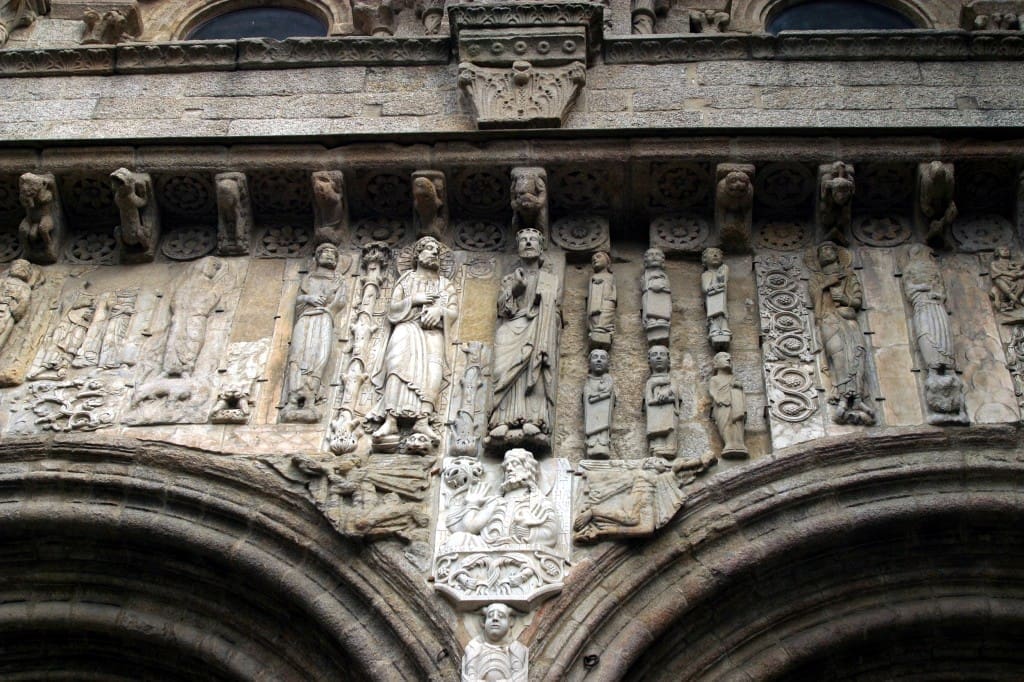
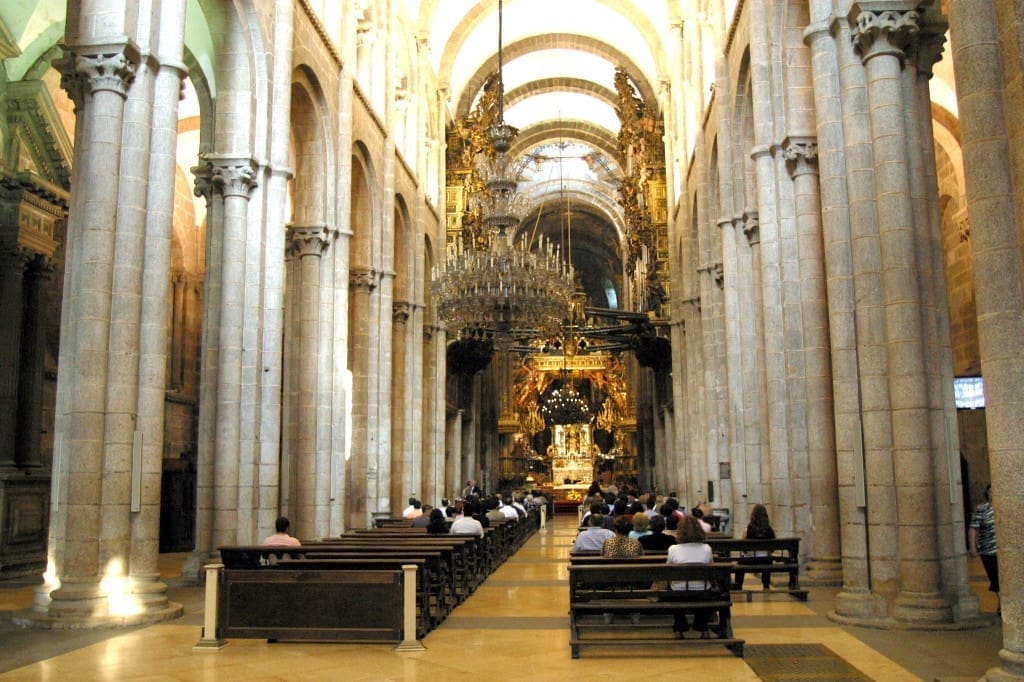
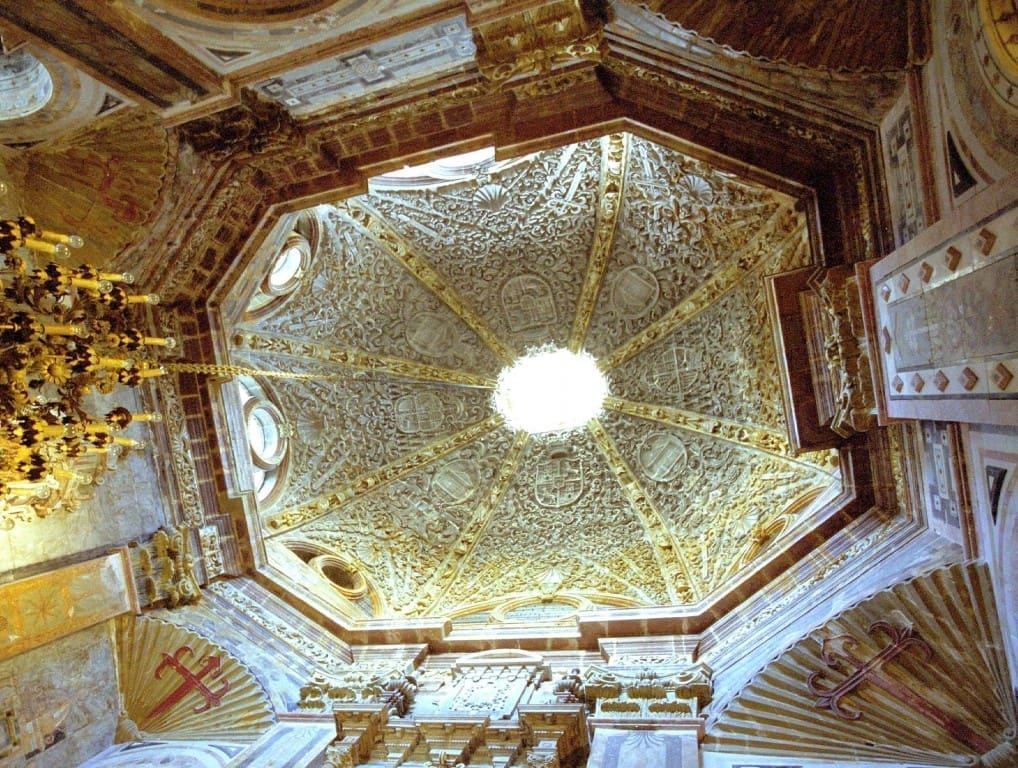

 Catedral de Santiago
Catedral de Santiago 